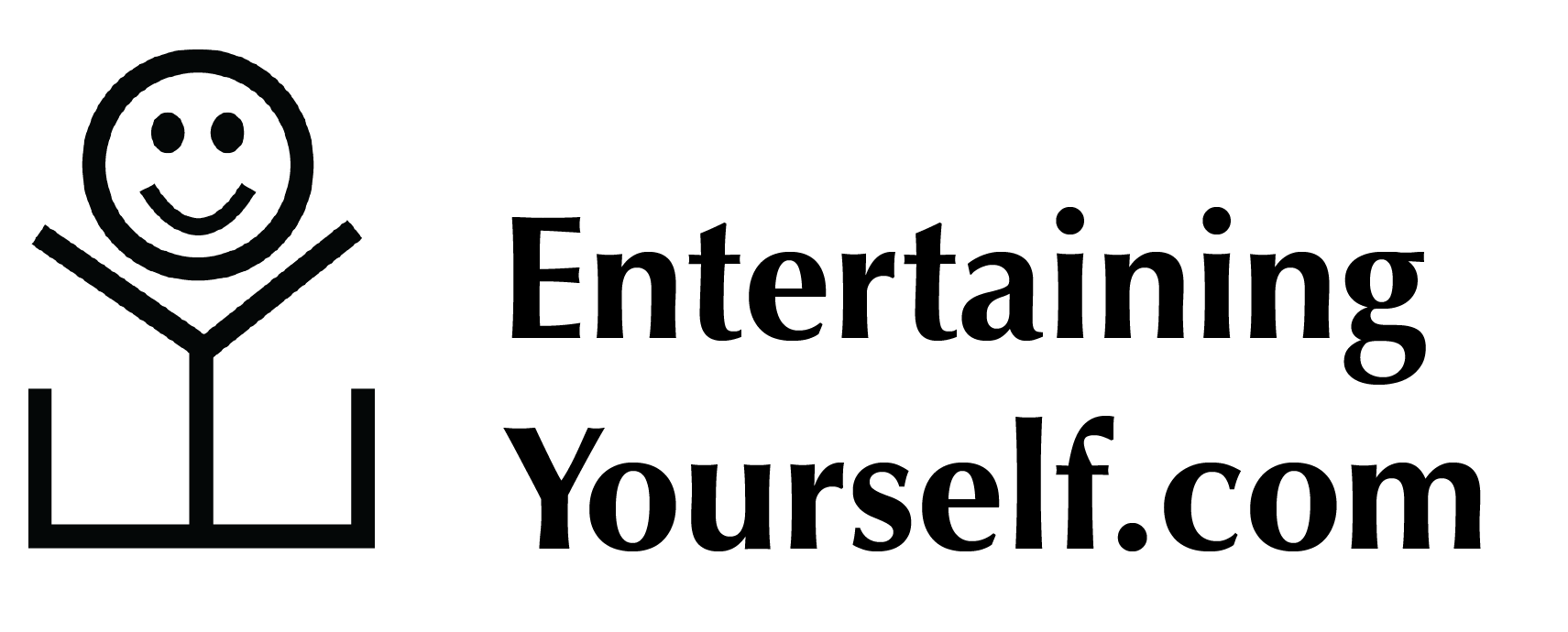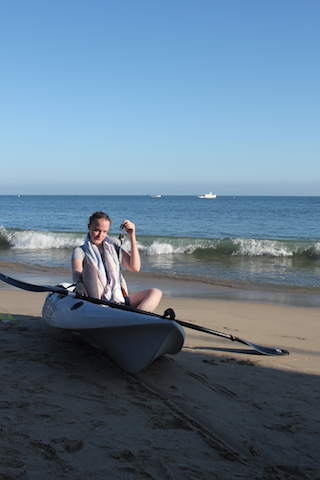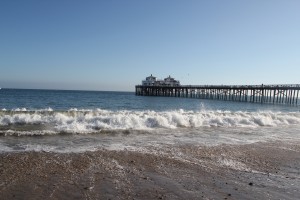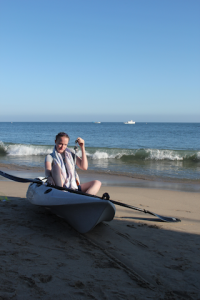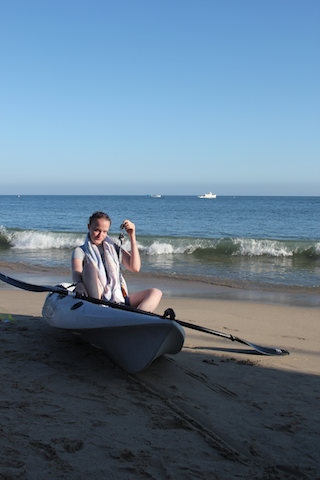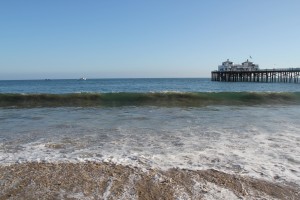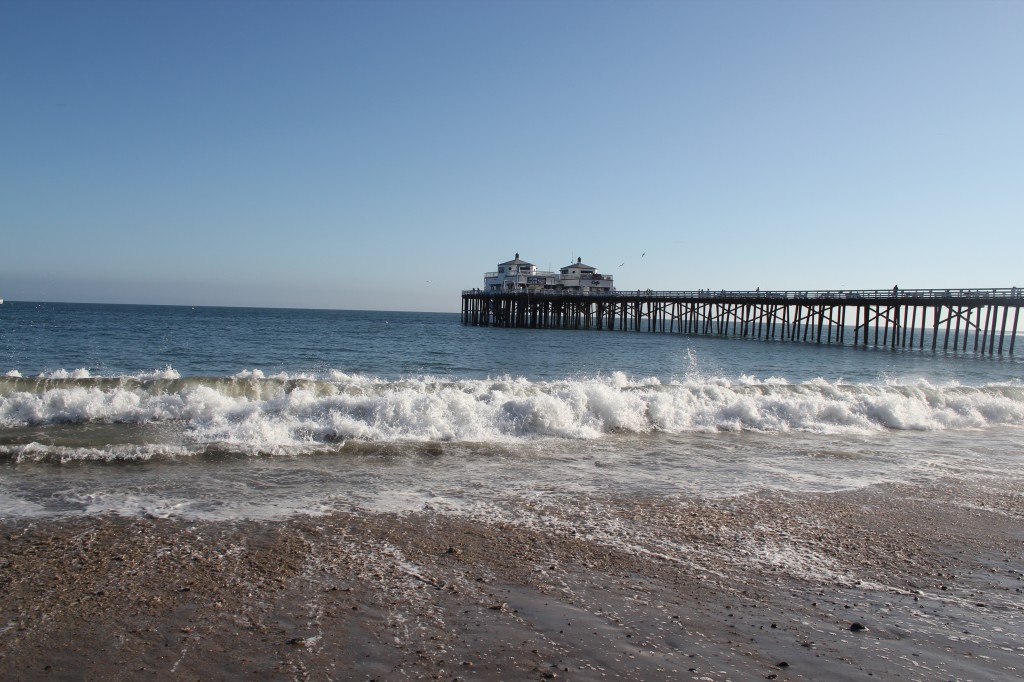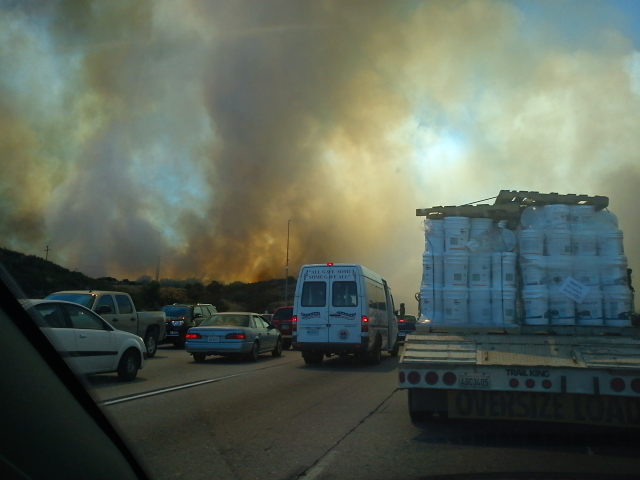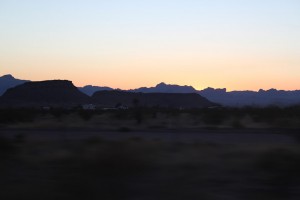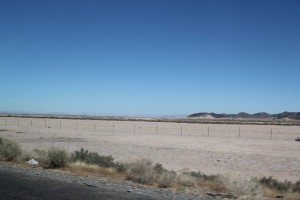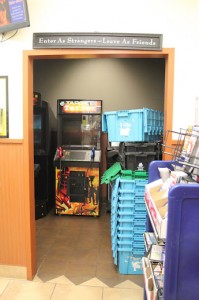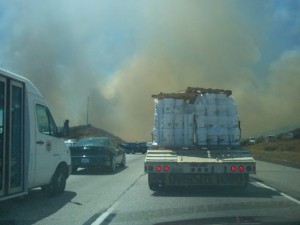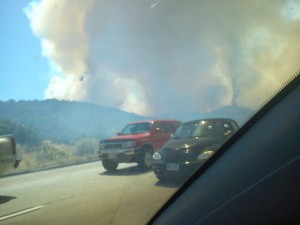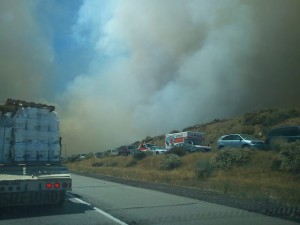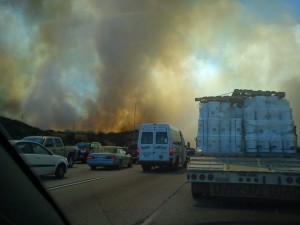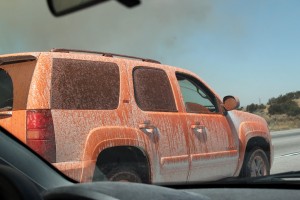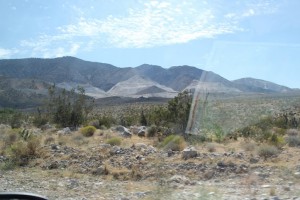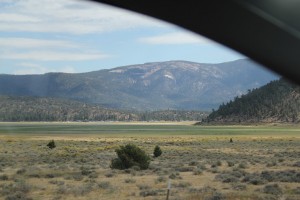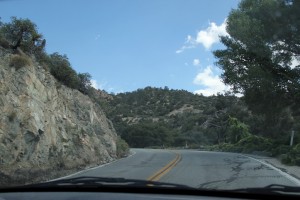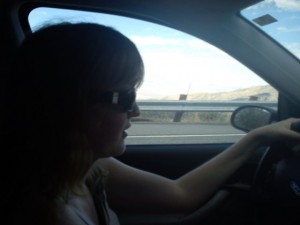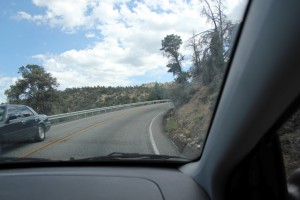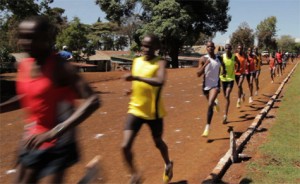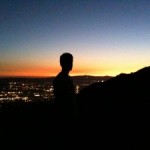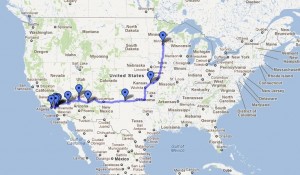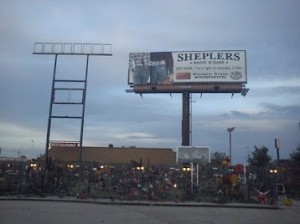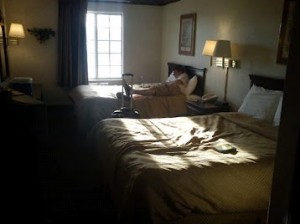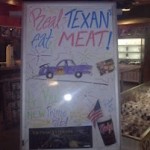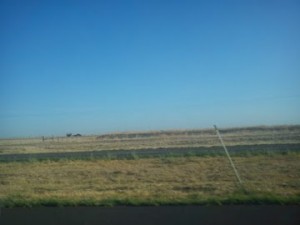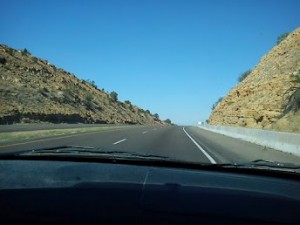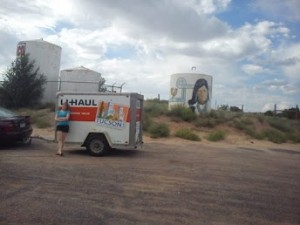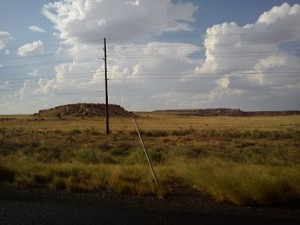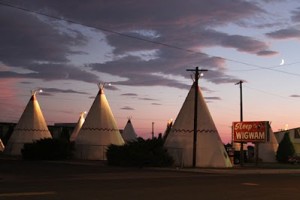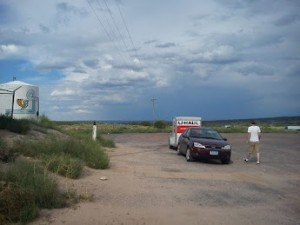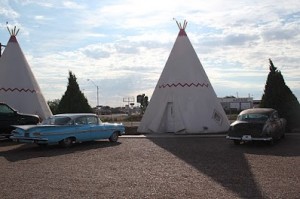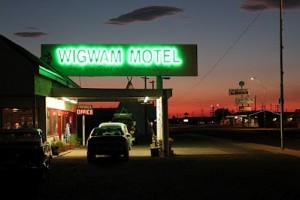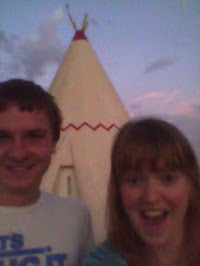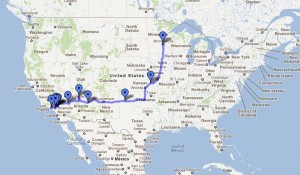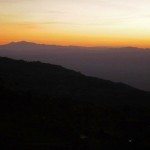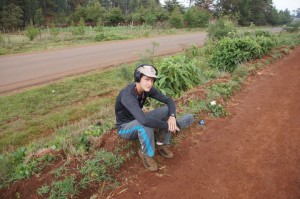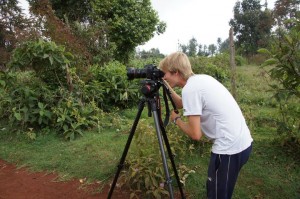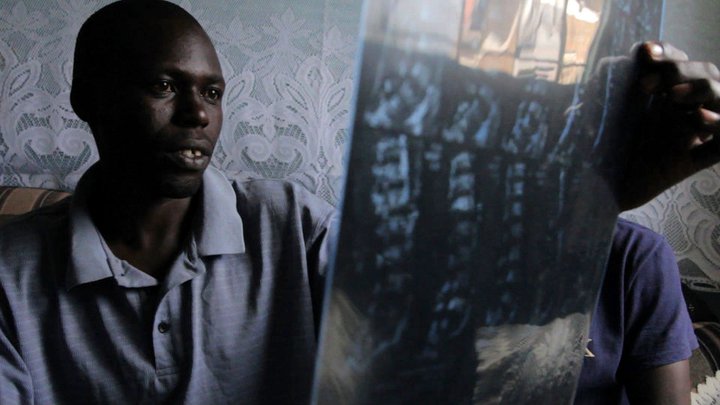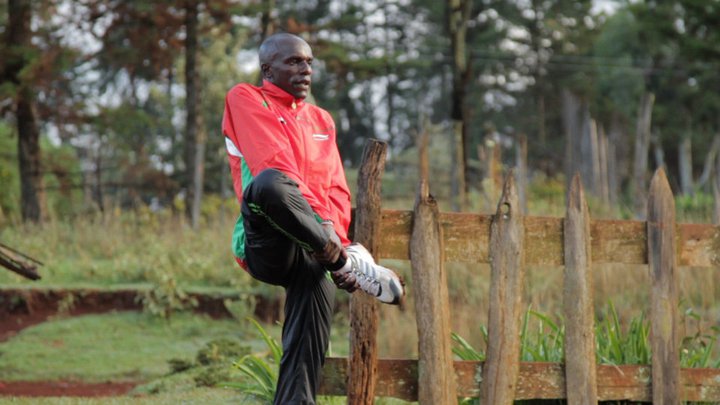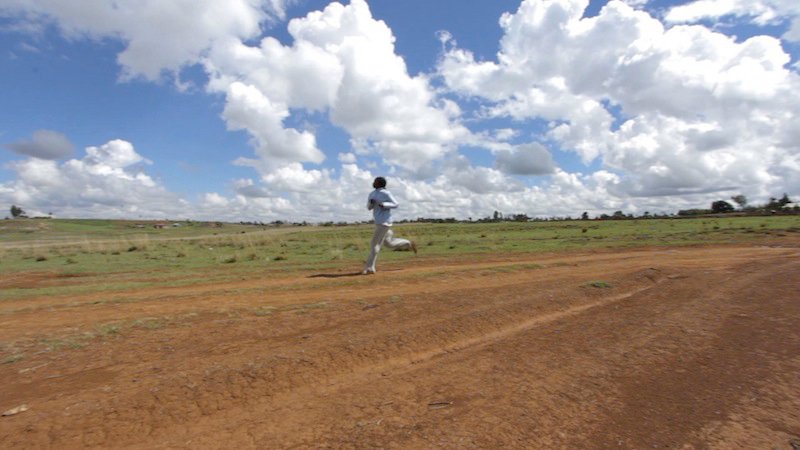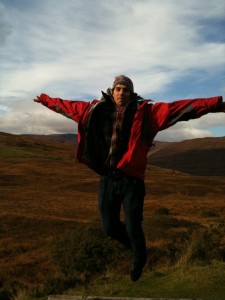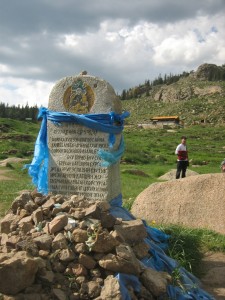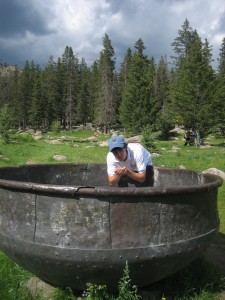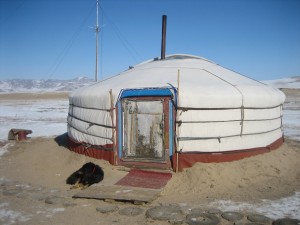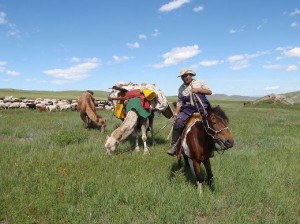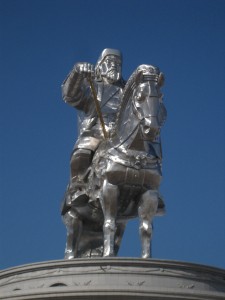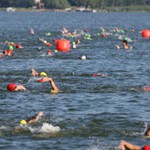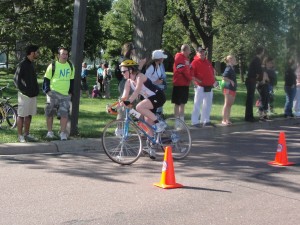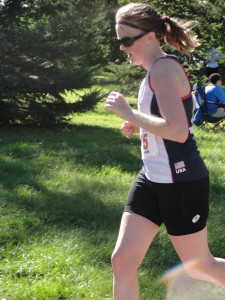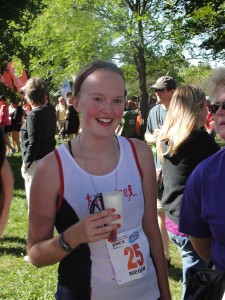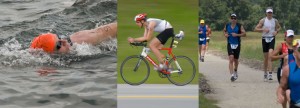The Key To Sea Kayaking – Part 2
Part 2 of 2 by Megan Ritchie
(continued from Part 1 of 2) After an hour on the water sea kayaking, I was all calm now, a real ocean woman. Sure, I come from the middle of an enormous continent, and have lived in landlocked cities my whole life, but here I was, at my true roots. I was an ocean conqueror! A Californian!! Suddenly the waves lurched in front of me, taking my boat with them. An enormous wave overtook my boat and spun it parallel to the shore, like a crazed giant with a toy top, before flipping me over into the waves. There was a flash of panic as I tumbled out, and the waves ripped away my sunglasses, ponytail binder, and the sassy bandana I’d tied into my hair that morning, and carried them to somewhere far away. I kicked hard away from my boat, all the while thinking “Don’t let it hit my head. Please don’t let it hit my head.”
Wave after mighty wave ground me into the sand. I struggled to stand against them – I was only a dozen feet off the shore by then and the water wasn’t deep – and finally, gained my footing. I plodded up to shore.
On shore, Sarah was doubled over with laughter. “That was….gasp….the biggest wave….gasp…I have ever seen,” she said as she scrambled to grab my paddle out of the still pummeling waves. Adrianna, the wench, had made a successful landing on shore unscathed, and helped me pull my boat up onto drier ground, before we all collapsed into laughter.
“That was amazing,” Sarah said, once we’d all caught our breaths. Sarah pointed up to the pier. “There were even guys up there at the restaurant who were yelling suggestions to you, but once that wave came up, you didn’t have a chance.”
I tapped my head, trying to get some water out of my ear. “I’ve always known I’m really gracefully,” I said dryly. “But I think I may have outdone myself on that one.”
We decided to eat our lunch on the beach before heading back out for another round of kayaking. We scurried up to the parking lot and I reached into my running shorts to grab the key – we’d locked our lunches in the trunk. But the key wasn’t there.
“Oh. No.” I said.
“What is it?” asked Adrianna.
“The key. I put it right here,” I said, motioning to the little pocket stitched into my running shorts, “But when I fell, it must’ve…it must’ve gotten pulled out.” We all looked out onto the waves.
“Oh shit,” said Sarah.
“Yeah.”
We ran down the stairs again, looking around in the sand. But, like my sunglasses and bandana, there was no sign of the car key. I’d taken it off from my lanyard, so it was easier to tuck into my running shorts; our hunt was literally looking for a needle in a haystack…or a car key in an ocean. Sarah said she’d keep looking along the beach while Adrianna and I clambered back up to the parking lot. We debated what to do for a moment, before appealing to the parking attendant to use his phone. After explaining what had happened, he said matter-of-factly, “Oh, you should never take your keys out with you. Everyone just checks them here with me or at the Surf Shack. That way, you’ll never lose them if you hit a wave.” I looked at him. Paused.
“That’s good advice, I’ll be sure to do that next time,” I said through clenched teeth. It wasn’t anyone’s fault but my own (and maybe that big wave’s) that we were in the situation, but it wasn’t particularly helpful to be reminded of a wiser alternative.
Adrianna and I came up with a plan: I had a Triple A membership and could get them to unlock the trunk, which had my purse and phone. Then, I’d call one of my roommates, all of whom I’d met only six weeks earlier, and convince them, beg them really, to drive across the entire Los Angeles metropolitan area on a gorgeous Sunday afternoon with my spare car key, only to turn around and drive home. I sighed. There went the afternoon, and a nice chunk of my dignity.
Triple A said they’d be there in 45 minutes. I handed the parking attendant back his phone and thanked him for his help. He shrugged and gave me a “You sure are dumb” look. Helpful. Adrianna went to go check in with Sarah, and came back saying there was still no sign of the key along the beach. Just then, the surfer dude from the Shack, the guy who’d helped us carry the kayaks down to the beach what seemed like days ago, passed by, helping another couple with their boats.
“How’d it go?” he asked. “You didn’t die, I see.”
“Oh, it was really fun,” I said, trying to reassure his latest victims. “Except, well, I managed to horribly flip my kayak and lose my car key in the ocean.”
The couple, still fresh, looked a little alarmed. “Oh God, that’s horrible,” said the surfer dude. He shot me a sympathetic look as he kept walking past. Adrianna sighed unhappily.
“Are you sure it’s not in your shorts?” she asked.
I shook my head as I poked around in them again, adding “groping myself” to my long list of how uncool I looked/felt at that moment. They were the type of shorts that had built-in underwear, the better to run in, I suppose, and I fiddled around with the liner.
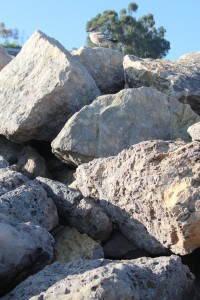 “No, I don’t see—“ And then there, at the very bottom of the shorts, at the very bottom of the liner, I felt something: The key.
“No, I don’t see—“ And then there, at the very bottom of the shorts, at the very bottom of the liner, I felt something: The key.
I pulled it out, looking very much like a proud hen that had just laid an egg, or, in this case, a Ford Focus key. “I found it! I found it!”
After high-fives all around and a quick phone call to cancel the Triple A locksmith, we settled along some rocks for a victory lunch. Maybe I wasn’t a Californian just yet, maybe I hadn’t yet mastered sea kayaking or waves or heck, checking my car key with the parking lot attendant, but one thing is for sure: I am really good at storing stuff in my underwear.
~Megan~
